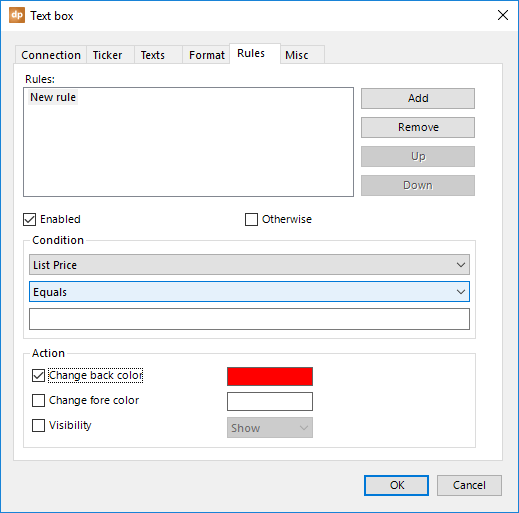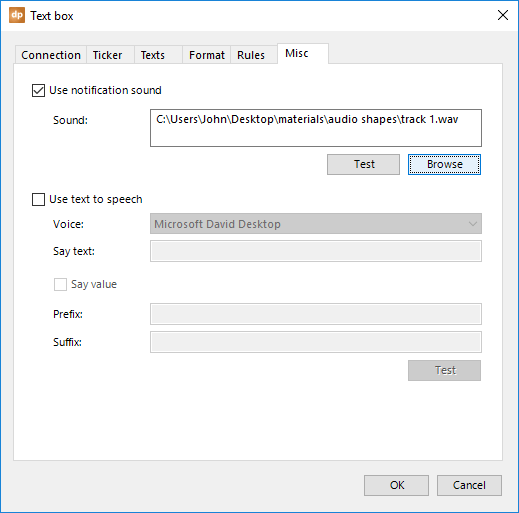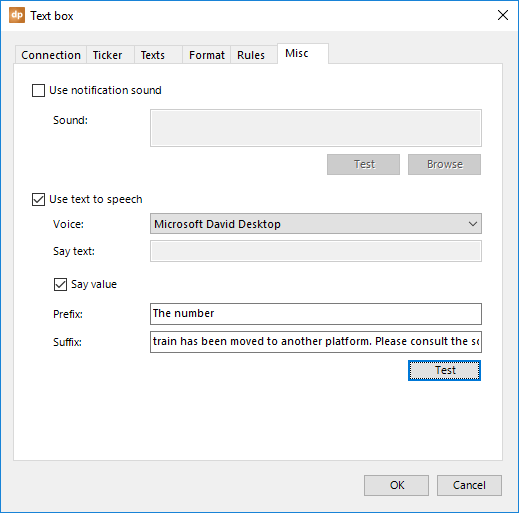Just like regular presentations, data-driven presentations display various forms of content, including text, tables, charts, graphs, and more. The main difference is that data-driven presentations update automatically according to the data sources they are connected to.
The Use Cases for Data-Driven Presentations
According to a research report on “Global Digital Signage Market Analysis By Product, Offering, Hardware, End User Industry -By Region, By Country (2017-2022)” published by OrbisResearch.com, the global digital signage industry has been growing rapidly over the past several years and is projected to display a robust growth represented by a CAGR of 8.21 percent during 2017–2022.
Because data-driven presentations make it possible to present information visually and in real time, they are ideal for digital signage and displaying everything from advertising to tickers to menu items to event information to navigation to weather to reservations.
There are cases where spreadsheets with a huge wall of rows filled with numbers have their place, but most audiences are more responsive to data visualizations. Data-driven presentations can significantly reduce the amount of time it takes to visualize data because they can serve as reusable and automatically updatable templates.
For example, a business can create a single data-driven presentation with KPI dashboards, infographics, and live reports and present it during every meeting with the shareholders without making any modification to it.
As you can see, the use cases for data-driven presentations are innumerable and applicable across all industries.
Creating Data-Driven Presentations with PowerPoint
Microsoft PowerPoint is the most popular presentation program in the world and a part of the Microsoft Office suite of productivity applications targeted towards different end-users and computing environments.
With the DataPoint add-in, PowerPoint can display real-time data from connections to nearly any data source for automatically updating presentations, information screens, or digital signage.
There are several advantages to using PowerPoint with the DataPoint add-in to create data-driven presentations:
- Availability – Being the most popular presentation program in the world, PowerPoint is already available to most businesses and individual users alike. Instead of spending a large sum of money on a single-purpose solution, it’s a lot more cost-effective to simply extend the capabilities of PowerPoint with the DataPoint add-in.
- Familiarity – Most computer users are already familiar with PowerPoint and know how to use it to create engaging presentations. And thanks to the ease of use of the DataPoint add-in, anyone can start creating data-driven presentations using PowerPoint with DataPoint in no time.
- Flexibility – Custom systems quickly become obsolete if not adequately maintained, and it’s no secret how expensive the maintenance of a custom system can be. Because of Microsoft’s commitment to making the PowerPoint the best presentation program in the world, PowerPoint not only isn’t in any danger of becoming obsolete, but it’s actually growing more flexible with each release.
- Templates – PresentationPoint, the developer of the DataPoint add-in, has prepared a wide range of both free and professional digital signage templates for PowerPoint. The available templates cover everything from business hours to dashboards to news to price lists to weather, and they have been designed by experienced professionals who know how to attract attention with a presentation and help businesses get noticed.
- Multi-user ready – Microsoft Excel, a popular data source for data-driven presentations, is another familiar program from the Microsoft Office suite, and it supports multi-user editing out of the box with shared workbooks. In practice, this means that multiple employees can update the same Excel spreadsheet at the same time and display the data from it using PowerPoint and DataPoint in real-time.
- Support – Both PowerPoint and DataPoint are supported by established companies with a track record of success and customers that include some of the most recognizable brands in the world. PowerPoint and DataPoint are also extensively documented and ready for all kinds of deployments.
How to Create a Data-Driven Presentation with Alerts
Creating a data-driven presentation with alerts using PowerPoint and DataPoint is effortless.
First, start by doing a rough draft in PowerPoint. Alternatively, choose a pre-made template and modify it to fit your needs.
Second, pick a data source. DataPoint supports integrations with social networks, Microsoft products, internet data files, databases, and CSV and text files.
Third, choose an alert method. DataPoint supports three kinds of data-driven alerts in presentations:
Rules and Conditions
For example, DataPoint can display a number in red when its value is lower than 100.
Notification Sounds
DataPoint can play a .wav file when it detects a data change.
Text to Speech
DataPoint can use a synthesized voice to announce a new value or say a specified piece of text.
Conclusion
Data-driven presentations can display various forms of content, making them ideal for digital signage. With the DataPoint add-in for Microsoft PowerPoint, anyone can easily create a visually appealing and engaging data-driven presentation with alerts using data from Excel spreadsheets, databases, social networks, text files, internet services, and many other sources.
The growth of the digital signage market clearly illustrates the presence of many opportunities how to attract new customers and improve existing services using digital signage powered by data-driven presentations with alerts. DataPoint allows anyone to embrace these opportunities without any expert knowledge and with the support of an established developer with over two decades of experience and countless satisfied customers, including leading companies such as NASA, SpaceX, LG, Sony, Siemens, Microsoft, Coca-Cola, Nikon, Gartner, EA, and many others.




